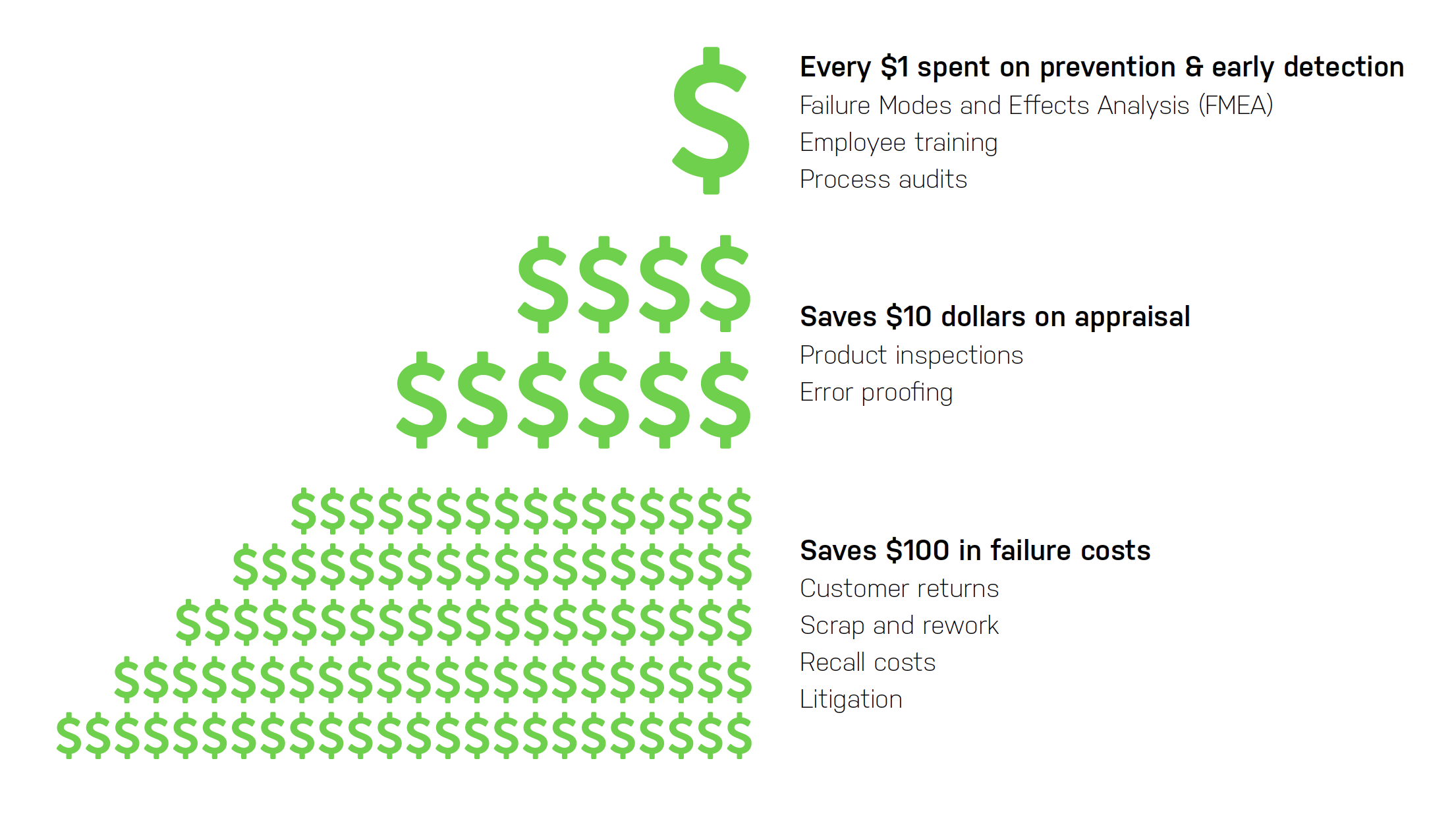Are Your Quality Management Objectives Missing the Point?


When it comes to quality management objectives, what many manufacturers don’t understand about cost of quality could hurt them.
A survey by LNS Research asked more than 500 manufacturing executives to identify their most important financial and quality management objectives. Across the board, growing revenue was the top financial objective, while reducing cost of quality was the top quality management objective.
One surprising insight, however, was that few executives selected both reducing cost of quality and revenue growth as their most important goals. Instead, the survey revealed:
- Those who said revenue growth was most important put other quality management objectives above cost of quality
- Those whose top quality management objective was reducing cost of quality put other financial objectives above revenue growth
This point reveals a fundamental error in thinking on the part of manufacturing leaders—one that may actually prevent them from achieving their quality management goals. Here we look at the true connection between cost of quality and revenue, and how manufacturers can leverage the 1-10-100 rule to improve performance.
Download a free white paper to learn how to Improve Production Quality with Layered Process Audits
The Link Between Quality Costs and Revenue Growth
Every dollar saved on the cost of poor quality adds directly to bottom-line profits. What’s also true is that reducing cost of poor quality also enables revenue growth.
The reason is that when you’re making fewer bad products, you’re wasting fewer resources on scrap and rework. Those resources shift from producing defective products to manufacturing additional good products.
For instance, let’s look at what happens if a company is able to reduce production defects by even a modest amount—say 10%. Not only are there direct savings from reducing cost of quality, which can run into the millions or more for the average company, there are indirect benefits that unlock revenue growth, including:
- Increasing productivity by manufacturing more units at the same cost, freeing up time for operators to make good product as opposed to reworking defectives
- Increasing production capacity by manufacturing more good product with the same materials and equipment
- Higher sales due to improved customer satisfaction and reduced customer churn
These improvements represent the flip side of opportunity costs of poor quality—they’re the opportunities you could be capturing when you don’t pay to produce or fix defects.
Improving Quality Doesn’t Necessarily Mean Spending More
According to experts at McKinsey, only a small number of companies ever reach the level of maturity where they can truly say quality is the basis for their reputation. One interesting point they note, however, is that organizations with the most advanced quality practices aren’t necessarily spending the most on quality.
As it turns out, the key to making the right investments is to prioritize those actions that are most effective at reducing quality problems. From a strategic standpoint, there’s no question that those actions should focus on defect prevention.
Making the 1-10-100 Rule Work for You
When it comes to determining the effectiveness of quality investments, the 1-10-100 Rule can provide a helpful guidepost. A concept that’s central to the Total Quality Management (TQM) philosophy, this rule shows that quality costs increase in order of magnitude as you move from prevention to detection to correction (and beyond).

The big point here is that prevention is a relatively low-cost, high-impact way to reduce quality costs and ensure optimum production capacity. Companies that understand this front-load their investment in high-leverage activities such as:
- Assessing potential failures in product design or manufacturing processes with failure mode and effects analysis (FMEA) and process failure mode and effects analysis (PFMEAs)
- Using a layered process audit platform to verify that controls are in place for high-risk PFMEA items
- Implementing process improvement programs that help build a culture of quality
When it comes to prioritizing cost of quality versus revenue growth, the truth is that the two are inseparable. The good news is that you don’t necessarily have to make massive investments to see results. Instead, it’s about making the right investments, the ones towards the top of the 1-10-100 Rule pyramid to gain leverage over quality costs.
From this viewpoint, it’s clear that companies can either pay for quality up front, or they can pay for it later. What’s more, not investing in quality essentially hands your competitors an advantage, putting you behind right out of the starting gate. Making the right choice is what ultimately determines whether a manufacturer can build a reputation for quality and the competitive advantage that comes with it.